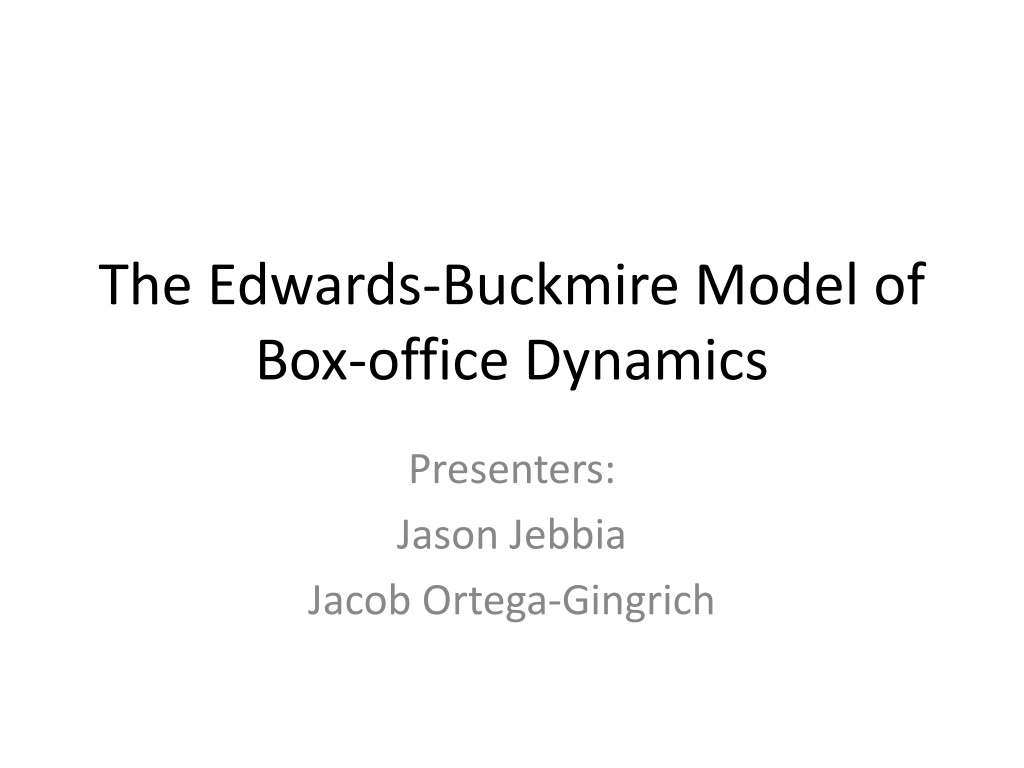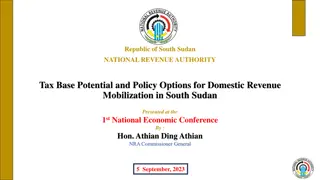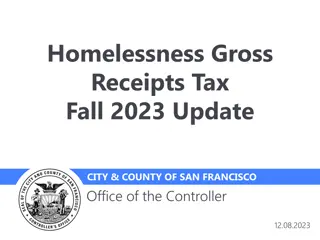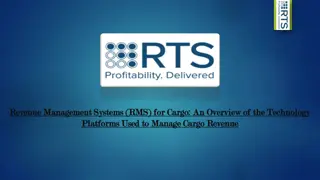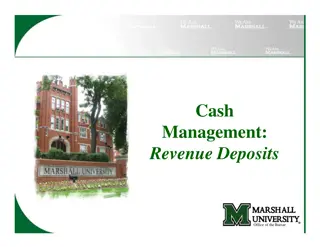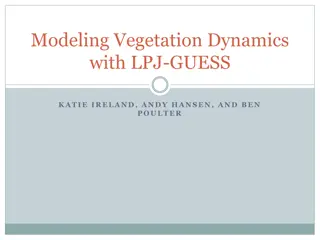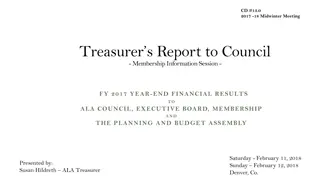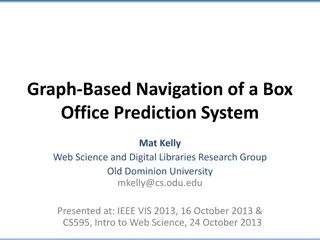Dynamics of Box Office Revenue Modeling
The Edwards-Buckmire Model of Box Office Dynamics, developed by Ron Buckmire and David Edwards, uses a system of three nonlinear differential equations to analyze factors impacting movie revenue including repeat viewings, marketing, critical reviews, and word of mouth. The model's equations describe revenue collection rates, screen availability, and advertising effects. Assumptions include no repeat viewings, no impact of reviews on attendance, no advertising budgets, and no negative audience reactions.
Download Presentation

Please find below an Image/Link to download the presentation.
The content on the website is provided AS IS for your information and personal use only. It may not be sold, licensed, or shared on other websites without obtaining consent from the author. Download presentation by click this link. If you encounter any issues during the download, it is possible that the publisher has removed the file from their server.
E N D
Presentation Transcript
The Edwards-Buckmire Model of Box-office Dynamics Presenters: Jason Jebbia Jacob Ortega-Gingrich
The Model Developed by Ron Buckmire and David Edwards System of three nonlinear, coupled, first-order, ordinary differential equations. Takes into account several factors including: Effects of repeat viewing Effects of Marketing and advertising Effects of critical review Effects of word of mouth
Three Functions: ~ ~ ~ G(t): Total Gross Revenue taken in by t S(t): Total number of screens showing the movie at the time t A(t): revenue generated per screen at the time t. Note: t=0 represents the release of the film ~ ~ ~ ~ ~ ~
First Equation: ~ ~ ~ R(t): rate at which revenue is collected at t R(t) is the derivative of G(t) R(t)=SA ~ ~ ~ ~ ~ ~ ~ ~ First equation:
Second Equation: Describing = the rate of change of the amount of money earned per screen per week
Assumptions: (1) No one sees the film returns to see it again (2) Reviews have no affect on attendance (3) Films have no advertising or marketing budgets (4) No one who sees the film has a negative reaction -The natural decay rate of A
If we take into account (1) and (2) the equation becomes: the number of times an average moviegoer sees the film the effects of movie critics on the attendance
The behavior of the effects of (3) advertising and marketing can be described by: the amount of money spent on marketing and advertising a constant describing the effectiveness of M in slowing the decay rate
Taking into account the effects of (4) word of mouth percent of viewers who dislike the film number of attendees who dislike the film constant describing the effectiveness of in decreasing the decay rate
Total Gross Average price of Admission
Decay Rate of the number of screens showing the movie The natural decay rate of screens Critical threshold Capacity of each screen location
Scaling the Equations ~ S(t)=S/S* A(t)=A/Amax G(t)= SSA/S*Amax ~ ~ ~ ~
Scaled Equations dS/dt=-(S-A) dG/dt=SA dA/dt=- ((S/S+ )+?G)A
Parameters Some parameters, such as P, Amax and S* could be taken from a database, since these values are similar for all movies. Other parameters, such as ?A?S?, may depend upon the cast, genre, etc. These may also be taken from a database. Other parameters may be unique to the movie; it is only possible to calculate these after the release of the movie. These include: M,D,H%,? etc. ~ ~ ~
